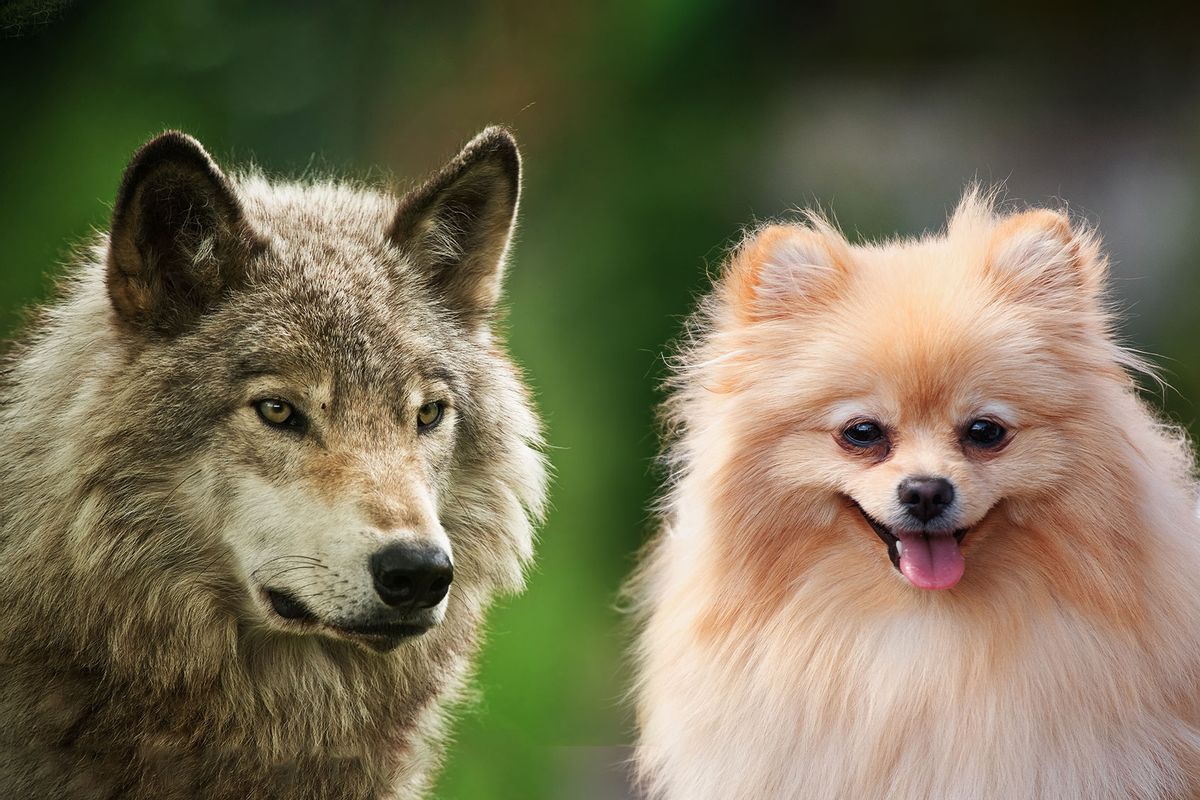There is a good reason why so many humans refer to dogs as man's best friend. Humans domesticated dogs more than 11,000 years ago, before we even invented agriculture. Today dogs are popular as pets and "work" in countless day-to-day occupations alongside humans.
Yet despite our primal connection to canines, scientists don't entirely understand the process through which modern dogs were domesticated and diverged from their wolf-adjacent ancestors.
Now, a recent study published in the journal Nature has advanced our understanding of the evolution of dogs. Among other things, the researchers led by scientists from London's Francis Crick Institute figured out that modern domesticated dogs are overall more closely related to wolf ancestors from the eastern part of Eurasia (that is, modern Asia), as opposed to the western part of Eurasia (modern Europe). Keep in mind that, as recently as 10,000 years ago, wolves were some of the most common predators on Earth, and wolves and their close canid relatives occupied every continent save Antarctica and Australia.
RELATED: Scientists just learned what makes dogs huge or tiny — and it long predates selective breeding
"Our study takes important steps forward on the question of dog origins," Anders Bergstrom, one of the report's co-authors and a scientist at Crick's Ancient Genomics Laboratory, told Salon by email. "Studying ancient wolves that lived close to the time of dog domestication, we found that dogs overall are more closely related to ancient wolves in Asia than to ancient wolves in Europe, suggesting a domestication process somewhere in the east."
Yet this does not mean that all modern domesticated dogs came entirely from that eastern Eurasian domestication process.
"We find that some dogs, in particular those in Africa and the Near East, have an additional genetic contribution from a second wolf source population, one that is related to wolves in the west," Bergstrom noted.
Bergstrom concluded, "There thus seems to have been at least two separate wolf source populations, giving rise to dual ancestry in dogs today."
That makes dogs curiously similar to modern humans. The human genome contains about 2.5 percent Neanderthal DNA, meaning that we are the modern hybrid of two hominids; though interestingly, not all humans have much of this DNA, and some human populations have almost none. Likewise, dogs appear to be the modern hybrid of two different "source wolves" with slightly different genetic composition and from different regions — though like us this second wolf contribution is not ubiquitous among dogs.
Want more health and science stories in your inbox? Subscribe to Salon's weekly newsletter The Vulgar Scientist.
To arrive at these conclusions, the scientists analyzed 72 genomes from ancient wolves, accumulated from Eurasia and North America and derived from a span that includes the last 100,000 years of history. They then compared that data with existing information about the genetics of various dog breeds all over the world.
"None of the ancient wolves included in our study are an exact match for either of the two source populations, suggesting that the sources will have lived in parts of the world that we have not yet sampled," the scientists mused.
"We found that wolf populations were highly connected throughout the Late Pleistocene, with levels of differentiation an order of magnitude lower than they are today," the scientists write. "This population connectivity allowed us to detect natural selection across the time series, including rapid fixation of mutations in the gene IFT88 40,000–30,000 years ago."
In addition, the scientists' research helped them figure out that modern dogs in Africa and the Middle East derive at least half of their ancestry from an entirely separate wolf population, one that is related to modern southwest Eurasian wolves. This indicates "either an independent domestication process or admixture from local wolves."
"There are two scenarios that could explain the dual ancestry that we have found in dogs," Bergstrom explained. "First, there could have been two independent domestication processes, with the two populations then coming together and merging into one. Second, there could have been just one domestication process, followed by gene flow from local wild wolves into dogs after dogs had arrived in e.g. the Near East. We cannot tell these two scenarios apart currently, but hopefully future studies of early dogs will be able to distinguish them."
Bergstrom elaborated on what kinds of future research will be needed.
"None of the ancient wolves included in our study are an exact match for either of the two source populations, suggesting that the sources will have lived in parts of the world that we have not yet sampled," the scientist mused. "So while our study shows that there would have been at least two source populations, the search for those sources will continue. Hopefully, by sampling more ancient wolf genomes from other parts of the world, future studies will be able to narrow down more precisely where dogs come from."
In recent years, scientists have made remarkable strides in learning more about the origins of domesticated dogs, and much of that work is due to advances in genetic technology. For instance, a 2020 study published in the journal Science revealed that modern sled dogs are closely related to an ancient lineage of dog that traces back at least 9,500 years.
"Together, these findings indicate substantial long-distance travel and transportation of resources, in which dog sledding would have been highly advantageous — if not necessary," the authors wrote in their study. After reviewing the specific details of their analysis of a 9,500 year old dog, they added that "our results imply that the combination of these dogs with the innovation of sled technology facilitated human subsistence since the earliest Holocene in the Arctic."
Read more Salon articles on dogs:



Shares